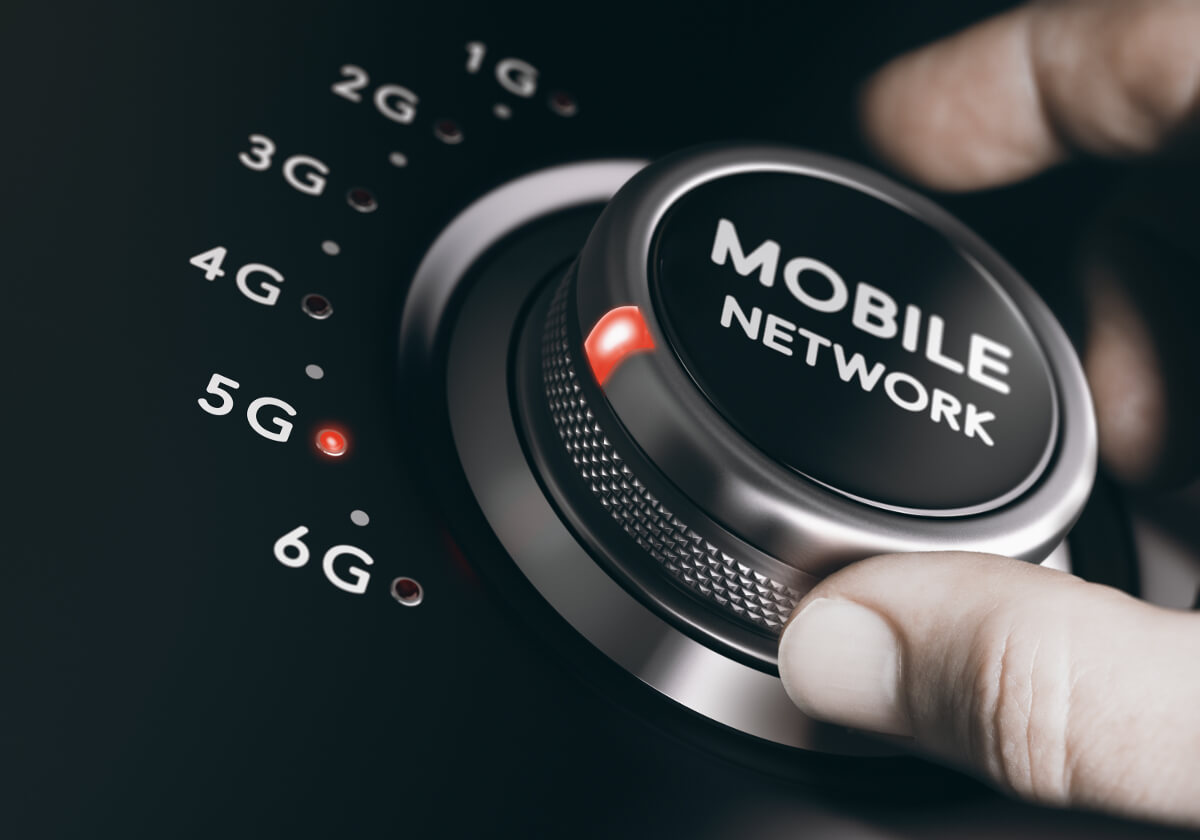The most profound technologies are those that disappear. They weave themselves into the fabric of everyday life until they are indistinguishable from it.
– Mark Weiser-The father of ubiquitous computing
Evolving mobile experience, together with billions of remote connections, is driving disruptions influencing every aspect of our lives. Today, connected technologies are quickly integrating themselves into the fabric of our livelihood. It is hard to conceive life sans connecting with other human beings. Since we have understood life and its unique nature, man has been eager to communicate with any life form. This existential crisis has driven innovations that have transformed our lives. One such amazing idea led to the birth of mobile communication using radio waves.
Digital Diplomacy
Initially, national governments and their respective Postal Telegraph and Telephone (PTT) monopolists firmly controlled the telecom markets. Nations throughout the globe saw an opportunity to outperform and emerge as a leader in the wireless communication technology space. Disconnected efforts let to an outbreak of multiple incompatible analog technologies. Market domination was a lucrative dream for nations across the world. However, this dream was resource intensive with economies of scale favoring one technology worldwide. Channelizing various disparate efforts toward one communication standard, agreed upon by consensus, had become the need of the hour.
Thus, several European nations committed themselves toward creating a network standard. Licensing spectrum for usage heralded the liberalization of communication, thus opening the marketplace to widespread competition. Significant improvements in service quality created a consumer-friendly ecosystem, both in terms of financial support and facility provisions. The world sat up and took notice of the revolution brought about by this advancement. Soon, other continents followed suit.

A harmonized European cellular technology began to take shape in the early 1980s under the auspices of European Conference of Postal and Telecommunications (CEPT), in an ad-hoc subgroup called Groupe Spécial Mobile (GSM). Gradually, all communication technology and standardization work was transferred to the European Telecommunications Standards Institute (ETSI) – created in 1989 – with CEPT GSM becoming ETSI Technical Committee (TC) GSM in 1990 and was later renamed “Special Mobile Group”, SMG in 1991.
By this time, public telecom operators across Europe began to move toward a private business model to gain operational flexibility. These operators opted for separate mobile divisions through which they bid for overseas licenses and forged partnerships. Eventually, this became a universal model for MNOs. A competitive telecom marketplace was born, shifting the focus away from enterprise to the consumer sector.
Amid this never-ending control and standardization-related frenzy, some actual groundwork was also taking place:

A system with a potential to handle voice transfer worldwide is expected to drive demand. More facilities and calling capabilities for the ecosystem were necessary to meet the growing demands. These planned improvements in capabilities and performance as compared to the predecessor technology were benchmarked as technology “generations” or “Gs”.
2G and the GSM explosion
After the success of 0G and 1G, came the commercial launch of second-generation or 2G cellular telecom networks. It was carried out by Finland-based Radiolinja in 1991 on the Global System for Mobile Communication (GSM) standard. GSM, a PLMN (Public Land Mobile Network), was designed in terms of compatibility with ISDN systems. The services provided were a subset of standard services offered by ISDN system, e.g., voice.

2G, under GSM standard, became the first digital voice transmission technology providing speed up to 14 kbps. It also powered the short message service (SMS) facility and used the bandwidth range of 30-200 KHz.
The success of this initiative was inevitable. Within seven years, GSM networks attracted over 50 million subscribers across Europe. Fixed networks required half a decade to manage same feat and the internet took twice the time to gain similar penetration. GSM was a well-thought-out move. It created a prototype for the global telecom sector by amalgamating the commercial, technical and regulatory side of communications. It sowed the seeds for communication to be ubiquitous, irrespective of the user’s location, making it a commercial success. At the technical level, it enabled digitalization of personal communications making it more secure and robust. The regulatory side of the initiative helped create a more competitive environment, with control over efficient usage of the spectrum.
Advancements in facilities and capabilities were necessary to handle increasing demand. One such facility driving demand was mobile data, a Value Added Service or VAS. Data was a “VAS” until the realization of the power it held.
Initially, GSM was a circuit-switched network; ideal for the delivery of voice but with limitations for transacting data. However, the GSM standard transmogrified into General Packet Radio Service (GPRS) in 2000. GPRS added packet-switched functionality, launching the internet on mobile handsets. GPRS typically reached speeds of 40Kbps downlink and 14Kbps uplink by aggregating GSM time slots into one bearer.
The 2G technology ensured an increased number of people to have a mobile subscription. This was even truer for regions with higher GDP and disposable income. This also effectively meant that the premium services had higher acceptance; thus triggering the growth of consumer data requirements.
Building up the demand
Connectivity today forms the bedrock of a great mobile experience. Unlike earlier, today, connectivity is focusing more on data. Voice communication was the priority for service providers. Things started to change when the GSM technology started evolving to better support data capabilities. Although voice was still a major portion of the consumer experience, data had begun knocking on the door.
Amazingly, ITU had started working on a certain technology standard decades ago called IMT-2000. It was a standard that promised 3G potential. Nevertheless, IMT-2000 was incompatible with the GSM supporting infrastructure. In reality, advancements were coming thick and fast. However, that did not translate into global acceptance. Within a year, the world saw developments leading to a leap from 2.5G to 3G. This left a huge gap between the telecom advancements and supporting technologies in all telecom markets except few that were leading these innovations.
Even though the potential of 3G was undeniable, the global penetration of any technology depends more than just on its novelty. In third world countries, where people were still struggling to meet their daily needs, mobile communication was a privilege that just a few enjoyed. A carefully strategized transition between technologies was imperative, where players across the value chain had a significant role to play.
This led to the inception of EDGE (Enhanced Data rates for Global Evolution), or Enhanced GRPS, also referred to as 2.75G. It employed new modulation technique yielding a three-fold increase in the bit rate (8PSK replacing GMSK) and new channel coding for spectral efficiency. EDGE was successfully introduced without disrupting the frequency reuse plans of existing GSM deployments. The evolution of standards in the 3rd Generation Partnership Project (3GPP) then delivered EDGE Evolution (EDGE+). EDGE+ was complementing the high-speed packet access (HSPA or 3G) coverage. EDGE+ improved spectral efficiency by reducing latencies down to 100ms. It increased throughput speeds to 1.3Mbps in the downlink and 653Kbps in the uplink. This provides users a taste of what was about to come. From that perspective, 2G, GPRS, and EDGE were laying the groundwork for future technologies such as 3G to gain popularity and mass acceptance.
The next evolutionary step for the GSM/EDGE cellular system was to align with UMTS/UTRAN through the standardization of enhancements. This paved way for GSM compatible third generation technology (3G). By using the combination of EDGE high-speed transmission technique and GPRS radio link interface, the GSM/EDGE radio access network (GERAN) provides efficient support for all QoS classes defined for UMTS. Thus, GERAN allowed support for new applications, including IP multimedia (real-time services).

There were several reasons for this gradual transition. On the commercial side, it led to reduced OPEXs that translated into revenue growth. This was because GERAN bearer capabilities were similar to those of UMTS, thus allowing GSM frequency bands to complement the UMTS bands acquired by the operators without any forced equipment expenditure. This also empowered the operators to create better interoperability between networks. Lastly, this ensured seamless switching between access technologies for the consumer. The same powered services like real-time multimedia and better development environment for applications.
Data: The Coming of Age
The addiction toward internet and data services led to the widespread use of broadband internet and “dumb” mobile device becoming smart. It was only a matter of time before the war shifted from being between voice and data to being between data and faster data. The evolution of communications technology revolved around the premise of data transfer speeds with respect to time. Software and devices became more data hungry. In addition, the vicious cycle of data and application was born, one trying to outrun the other.
In the meantime, the brilliant individuals were transforming the communication industry. Surprisingly, OTT players utilized the capabilities of telecom players to win over and leave the later as mere spectators. The timing was perfect, coinciding with evolving data capacities and price competition required for the seamless running and widespread usage.
Surprisingly, OTT players utilized the capabilities of telecom players to win over and leave the later as mere spectators. The timing was perfect, coinciding with evolving data capacities and price competition required for the seamless running and widespread usage.

What the Future holds
Mobile communication has slowly but steadily grown to penetrate every market, making a truly connected world a real possibility. The evolution of telecommunication is paving the way for novel technologies. IoT and Connected cars are difficult to visualize without having the ability to communicate flawlessly across devices remotely. As we enter the 5G era, we expect internconnected devices and things (IoT). Data handling capabilities will get a big lift with 100 times faster connections, thus reducing latency and power requirements.
This trend has led to a steep decline in the second-generation technology around the globe, with some operators opting to stop providing 2G services.

Even though the number of subscribers using the 2G service is much more than those using 4G LTE, the actual numbers do not tell the entire story. Over the past 5 years alone, there has been a 23% decline in 2G subscriptions. On the other hand, there has been an exponential increase in the number of 4G connections worldwide.

Although we are heading toward a future where technologies like GPRS and EDGE seem destined for extinction, there will always be early movers and late bloomers in this transition phase. All good things must come to an end, and if the end triggers a better beginning, then the journey can be termed a success.









